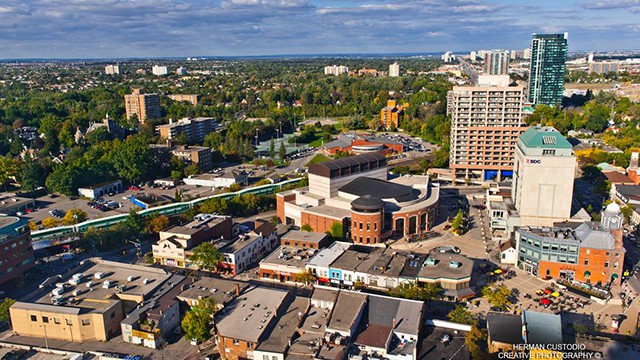Brampton Puts Pressure on Province to Support City Growth
Published August 11, 2017 at 5:52 pm

As Canada’s ninth largest and constantly growing city, Brampton has a lot on its plate.
As Canada’s ninth largest and constantly growing city, Brampton has a lot on its plate. Making Brampton a “future-ready” city has been a municipal priority for some time now, and now, the city is stepping up to discuss its growth priorities with the province.
Brampton officials have announced that a delegation is headed to meet with Ontario’s ministries and leaders of the NDP and Conservatives to address key initiatives that are pivotal to Brampton’s future-readiness.
The 2017 Annual Association of Municipalities of Ontario (AMO) Conference takes place in Ottawa from August 13-16, and the Brampton delegation includes Mayor Linda Jeffrey and City Councillors.
“As the second fastest growing of Canada’s largest cities, Brampton is a key contributor to the economy. This Council is committed to working together with the provincial government in building a stronger future with enhanced transit connections, post-secondary education, a vibrant health and life sciences cluster, and a strong focus on innovation and excellence,” said Mayor Jeffrey.
In terms of what will be discussed, regional connections, the up-and-coming university, fair representation within Peel Region, the Riverwalk, healthcare, and second units are on the agenda.
The city plans to ask for more provincial support for Brampton’s major strategic initiatives and an equitable governance model.
Discussions about strategic transit projects like advancing the Hurontario-Main Light Rail Transit Extension with an environmental assessment, master plans for the Brampton GO, Bramalea GO, Hurontario-Steeles, and Mount Pleasant GO Mobility Hubs, and opportunities to create better access in the Highway 410 and Highway 407 ETR, and future 407 Transitway area are in tow.
Further, in terms of the university, the city delegation plans to ask the province to allocate the currently promised $180 million to fund new university facilities in proportion to Brampton’s rapid growth. Moreover, the city is advocating for the province to Invest in research and development to link post-secondary and experiential learning opportunities and thus inject creativity into the business community.
As for fair representation within Peel Region, Brampton wants more seats at the Region of Peel Council in time for the 2018 municipal election. Currently, Brampton has seven seats on the council. In total, the city will advocate to increase that number to 11.
The delegation will also lobby for the province to support the implementation of the Riverwalk project. The Riverwalk project sits at an estimated $200 million for a long-term solution to flood risk in Brampton. The goal of the project is to increase potential for urban development and, ultimately, make Brampton more sustainable and resilient, says the city.
Healthcare is also on the agenda – it’s no secret that there are capacity and access issues at Brampton Civic Hospital and Peel Memorial. The city will lobby for the obvious resident demand for better healthcare services, but also, for a well-funded health system in Brampton. According to the city, better funding is necessary to the development of a preventive care-focused economic cluster that could add $35 trillion to the GDP and a potential 18,000 jobs.
Then there’s the issue of safety in second units – like basement apartments and multi-unit dwellings – and the delegation will encourage the province to change the Building Code Act and Planning Act. Ultimately, the city wants expanded rights of entry – or more control over second units – to inspecting secondary units and illegal multi-unit dwellings.
This is all well and good, but the results remain to be seen.
What would you add to the list of discussions with the province?
insauga's Editorial Standards and Policies advertising





